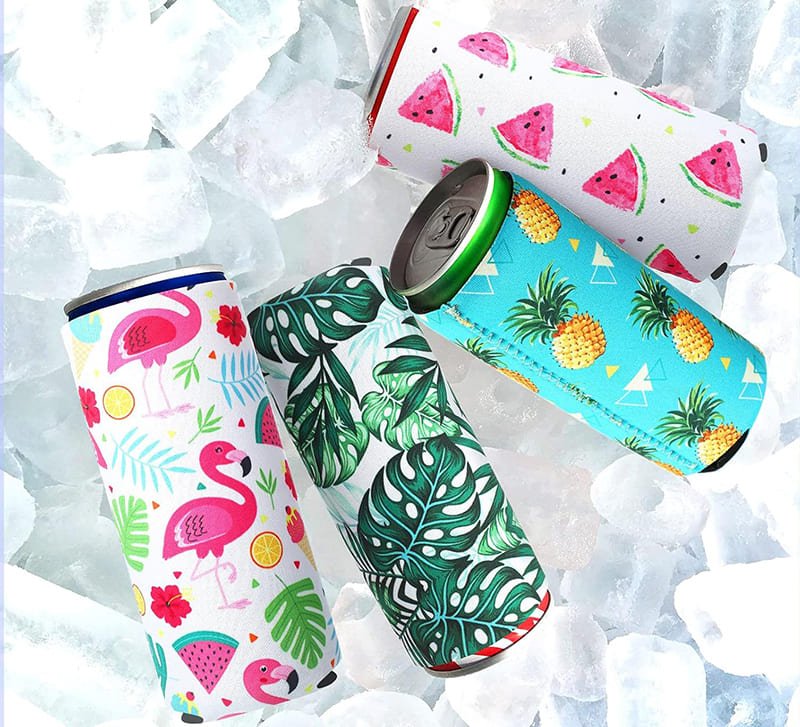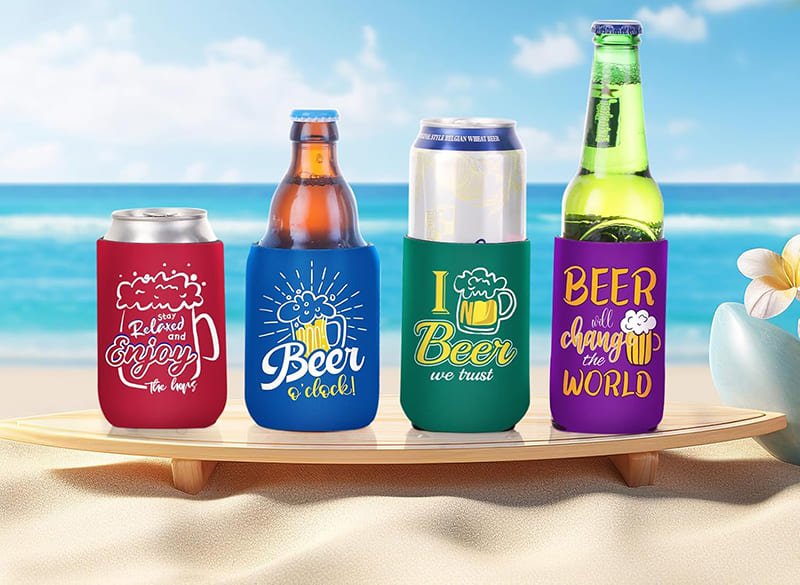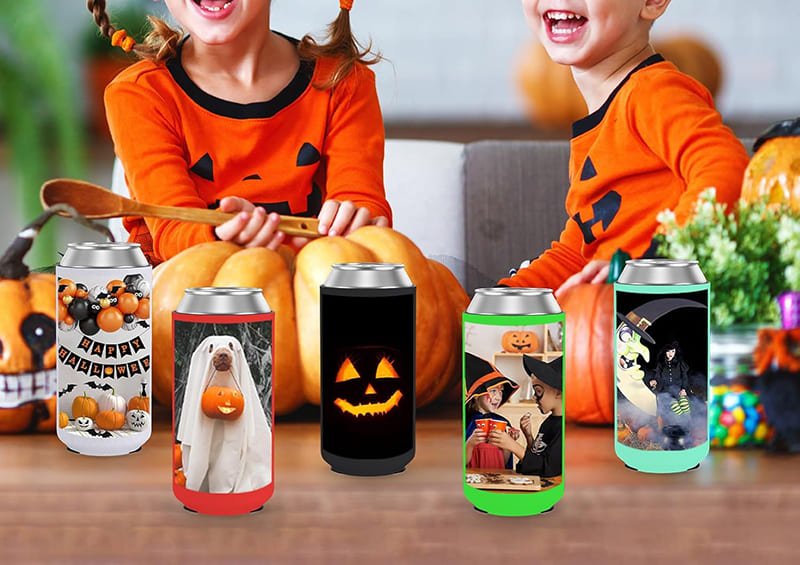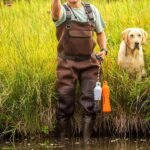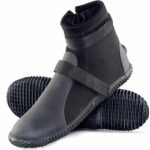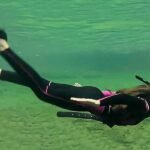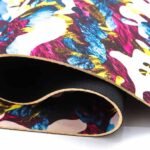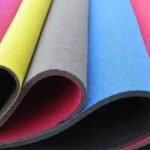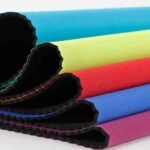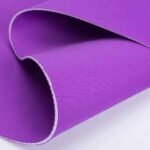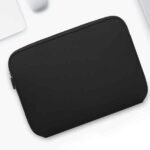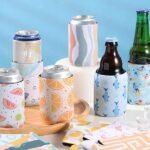You know that satisfying thunk when you slide a cold can into a snug koozie? Whether you’re at a backyard barbecue, a weekend tailgate, or just chilling on the porch, that little sleeve can make or break your drink experience. But with so many options, you might wonder: Are neoprene or foam koozies better?
Neoprene koozies deliver superior insulation, lasting comfort, and premium print quality, while foam koozies are lightweight, cost-effective, and quick-drying—making neoprene ideal for branded giveaways and long-term use, and foam perfect for budget-friendly, casual events.
I still remember the day my buddy swapped out our stock foam koozies for neoprene ones on his fishing boat—by lunch, our drinks stayed cold, and the drinks didn’t sweat all over the tackle. If you’ve ever fished on a hot day, you know that’s a game-changer. Let’s dive into the nitty-gritty so you can pick the right koozie for your next adventure or marketing campaign.
What Are Neoprene and Foam Koozies Made Of?
Neoprene koozies are made from closed-cell synthetic rubber (polychloroprene), typically 2–5 mm thick, while foam koozies use EVA or polyethylene foam sheets, 3–6 mm thick, offering basic insulation and buoyancy.
Neoprene Composition & Structure
Neoprene is synthesized by polymerizing chloroprene monomers into a high-molecular-weight rubber. The closed-cell structure traps gas pockets, yielding thermal conductivity around 0.05 W/m·K and excellent compression recovery. Thicknesses usually range from 2 mm (lightweight can coolers) to 5 mm (premium bottle sleeves).
Foam Materials: EVA vs Polyethylene
- EVA Foam: Ethylene-vinyl acetate copolymer with open and closed cells. Thermal conductivity ~0.03–0.04 W/m·K, buoyant, quick-drying.
- Polyethylene Foam (EPE): Expanded bead foam, mostly closed-cell, slightly higher conductivity (~0.04–0.05 W/m·K), more rigid, cut-and-seal finish.
Manufacturing Processes
- Neoprene: Extruded sheets are laminated to fabric face stock (nylon, polyester), then die-cut and edge-sewn or heat-sealed.
- Foam: Foam rolls cut via die or CNC, then glued or heat-sealed into sleeves. Print surfaces are typically heat transfer or pad-printed directly on foam.
Typical Thickness Ranges
| Material | Thickness Range | Thermal Conductivity | Compression Recovery |
|---|---|---|---|
| Neoprene | 2–5 mm | 0.05 W/m·K | >95 % |
| EVA Foam | 3–6 mm | 0.03–0.04 W/m·K | 80–90 % |
| Polyethylene | 3–6 mm | 0.04–0.05 W/m·K | 85–90 % |
Surface Finishes & Printability
Neoprene’s fabric lamination allows vibrant dye-sublimation or full-color printing. Foam offers basic pad printing or heat transfer—colors can be less sharp, especially on textured foam surfaces.
How Do Neoprene and Foam Koozies Compare in Insulation Performance?
Neoprene koozies maintain beverage temperatures 20–30 % longer than foam, reducing temperature rise by 3–5 °C over 30 minutes, while foam koozies offer decent insulation for casual use, slowing heat gain by 2–3 °C.
Thermal Conductivity & R-Value
| Material | Conductivity (W/m·K) | Approx. R-Value (m²·K/W per mm) |
|---|---|---|
| Neoprene | 0.05 | 0.02 |
| EVA Foam | 0.035 | 0.028 |
| EPE | 0.045 | 0.022 |
Heat Gain Over Time
In lab tests, a 5 °C ice-cold can in a 22 °C room:
- Neoprene (3 mm): ΔT ≈ +3 °C after 30 min
- EVA Foam (5 mm): ΔT ≈ +4 °C after 30 min
Cold Retention Tests
Longer retention in neoprene is due to lower conductivity and less moisture exchange. Adding a 1 mm foil lining can boost foam retention by 10 % but adds cost.
Impact of Thickness
Every extra millimeter adds ~5–8 % more insulation. A 5 mm neoprene vs 3 mm foam: neoprene can outperform thicker foam in real use due to sealing around the can and fit.
Real-World Scenarios
- Poolside: Quick-drying foam is handy; minor warming is acceptable.
- Hiking/Backpacking: Neoprene keeps drinks cold on long treks, resists sweat and abrasion.
What Is the Best Material for Koozies?
The best material balances insulation, durability, cost, and print quality—neoprene for premium performance and branding, foam for economy and casual use.
Do Foam Koozies Keep Drinks Cold?
Yes—foam koozies slow heat gain by approximately 2–3 °C over 30 minutes, enough for short outings and single-use events.
Which Material Offers Greater Durability and Tear Resistance?
Neoprene resists tearing and punctures better—tear strength ~50 N/mm vs foam’s ~15 N/mm—while foam can split at stress points, making neoprene the choice for rugged or reusable koozies.
| Property | Neoprene | EVA Foam |
|---|---|---|
| Tear Strength | ~50 N/mm | ~15 N/mm |
| Abrasion Cycles | ≥1,000 (Taber) | 200–500 (Taber) |
| Compression Set | <5 % (ASTM D1056) | 10–15 % |
Tear & Puncture Testing
Neoprene, with its rubber matrix and fabric laminate, resists punctures (e.g., dropped keys). Foam compresses and tears easily under sharp edges.
Abrasion Resistance
Neoprene yields ~1,000 cycles on a Taber abrader before showing wear; foam blanks lose integrity by ~500 cycles, especially around seams.
Compression Set & Longevity
Repeated can insertions compress foam cells permanently (compression set 10–15 %), causing sloppier fit over time. Neoprene rebounds (>95 %) even after 1,000 cycles.
Edge & Seam Reliability
Heat-sealed neoprene edges resist fraying; foam edge glue can delaminate or split after repeated use. Sewn neoprene seams add both strength and aesthetic appeal.
How Do Cost And Customization Options Differ Between Neoprene And Foam?
Foam koozies cost \$0.40–\$0.70 each in bulk, while neoprene runs \$1.00–\$2.50; neoprene allows high-resolution dye sublimation or full-color printing, whereas foam is limited to pad or heat transfer printing.
| Feature | Foam Koozies | Neoprene Koozies |
|---|---|---|
| Unit Cost (bulk) | \$0.40–\$0.70 | \$1.00–\$2.50 |
| Minimum Order Qty | 100 pcs | 50 pcs |
| Print Methods | Pad, Heat Transfer | Sublimation, Screen |
| Color Range | 1–4 colors | Full-color, all-over |
| Lead Time | 7–10 days | 10–14 days |
Material & Production Cost Drivers
Foam raw sheet costs \$2–\$3 per kg; neoprene sheet costs \$10–\$15 per kg. Cutting foam is faster; neoprene requires lamination, sewing, and possibly overlock stitching.
Printing Methodologies & Quality
- Foam: Pad printing yields simple logos; detailed designs risk smudging.
- Neoprene: Dye sublimation infuses ink into the fabric, ensuring vivid, durable, photo-quality prints.
MOQ and Inventory Flexibility
Foam’s lower tooling cost allows smaller MOQs (100 pcs). Neoprene lamination and sewn finishing raise MOQs slightly (50–100 pcs) but still accessible for small brands.
Turnaround Times
Standard foam orders ship within 7–10 days. Neoprene’s extra steps—laminating, die-cutting, sewing—add 3–5 days. Rush options are often available.
Case Study: Brand Campaign ROI
A craft brewery invested \$1.80 per neoprene koozie vs \$0.60 foam. At \$10 per koozie sale price, the premium print and durable feel justified a 200% markup, selling out 500 units in two weeks—beat cost by \$1,600 profit.
Are Neoprene or Foam Koozies More Eco-Friendly and Recyclable?
Both neoprene and EVA foam are petroleum-derived and challenging to recycle; however, open-cell EVA is recyclable in specialty streams, while neoprene has limited recycling, making foam slightly greener if facilities exist.
| Aspect | Neoprene | EVA Foam |
|---|---|---|
| Recyclability | Low (specialty) | Medium (EVA streams) |
| Biodegradability | None | None |
| Eco Options | Limestone neoprene | Bio-EVA alternatives |
| Certifications | Limited industry | Some ISO 17088 |
Material Lifecycle & Waste Streams
Neoprene off-cuts often go to landfill; some innovators shred and reuse in flooring. EVA foam has recycling centers in Europe and North America, but streams are limited.
Emerging Bio-Alternatives
- Bio-Neoprene: Made from limestone or plant oils—reduces petroleum content by 70%.
- Bio-EVA: Incorporates sugarcane-based ethylene—up to 50% bio-content.
Recycling Infrastructure
EVA foam collection bins exist at select footwear and packaging recycling centers. Neoprene lacks widely available take-back programs, though some glove makers offer limited returns.
Company Sustainability Practices
At Szoneier, we’re exploring closed-loop programs: collecting used koozies post-events for reprocessing, and offering bio-foam blends to conscious brands.
Consumer Perception & Brand Impact
Promoting “Made with 50% bio-EVA” or “Limestone Neoprene” can elevate your brand’s green credentials—especially among eco-aware Millennials and Gen Z.
What Are the Ideal Use Cases for Neoprene Versus Foam Koozies?
Choose foam for casual, budget events—festivals, giveaways, outdoor picnics—and neoprene for premium experiences: branded merchandise, corporate gifts, water-sports, and long-term retail products.
| Scenario | Foam Koozies | Neoprene Koozies |
|---|---|---|
| Music Festivals | ✔️ Low cost | |
| Corporate Gifts | ✔️ Premium feel | |
| Sporting Events | ✔️ Quick, disposable | ✔️ Durable, high-end |
| Retail Merchandise | ✔️ Long shelf life | |
| Marine & Boating | ✔️ Water-resistant |
Event-Scale vs Long-Term Use
Foam’s low unit cost suits 10,000-unit giveaways. Neoprene’s durability and print quality make it a keepsake—justifying higher price and smaller runs (500–2,000 units).
Brand Positioning & Perceived Value
Neoprene conveys quality—ideal for corporate hospitality or limited-edition drops. Foam signals casual fun—perfect for festivals and community events.
Environmental Conditions
Foam is fine in shade or short-term use; neoprene endures sun, salt spray, and heavier wear—perfect for boating and beach resorts.
Cost-Benefit Over Product Lifecycle
Neoprene’s longer life means fewer replacements. Calculate total cost of ownership: neoprene often wins when devices are used >10 times.
Customization Depth
Neoprene handles full-body prints, dye-sublimation, and specialty trims (pockets, handles). Foam is mostly single-logo prints in limited colors.
How Do You Choose the Right Koozie Material for Your Brand or Event?
Align material choice with your event scale, budget, desired longevity, and brand image—foam for high-volume, low-cost, short-term visibility, and neoprene for durable, premium, detail-rich branding.
| Factor | Foam | Neoprene |
|---|---|---|
| Budget | <$0.80 per unit | $1.00–$2.50 per unit |
| Run Size | ≥500 | 50–5,000 |
| Lifespan Needs | Up to 1 year | 2–5 years |
| Print Complexity | Simple logos | Full-color, all-over |
| Brand Image | Casual, fun | Premium, durable |
Decision Matrix Example
| Criterion | Weight | Foam (Score) | Neoprene (Score) |
|---|---|---|---|
| Unit Cost | 30% | 9/10 | 6/10 |
| Print Quality | 20% | 5/10 | 9/10 |
| Durability | 20% | 4/10 | 9/10 |
| Lead Time | 15% | 8/10 | 7/10 |
| MOQ Flexibility | 15% | 8/10 | 7/10 |
| Total | 100% | 7.1 | 7.6 |
Sample Client Briefs from Szoneier
- Festival Giveaway: 2,000 foam koozies in 2-color pad print, delivered in 10 days.
- Corporate Retreat: 500 neoprene koozies with full-color logo wrap, sewn trim, free samples provided.
Turnkey Service Options
Szoneier offers one-stop service: design mock-ups, sample approval, bulk production, quality inspection, and global shipping.
Quality Assurance & Testing
Every batch undergoes:
- Dimensional check (±1 mm)
- Print color matching (ΔE ≤2)
- Insulation performance spot checks
- Durability / compression tests
Next Steps for Ordering
- Contact us with your brief (material, quantity, print design).
- Receive free design mock-up within 24 hours.
- Approve sample and finalize order.
- Production & delivery in 7–14 days.
Choosing between neoprene and foam koozies depends on your budget, event type, brand image, and desired lifespan. Whether you need a fun giveaway or a premium retail item, Szoneier has you covered with free design, complimentary samples, and flexible OEM/ODM production.
Ready to elevate your brand’s hydration game? Reach out to Szoneier at www.szoneierwebbing.com, email info@szoneierwebbing.com, or call (+86) 138 2313 4897 today!


